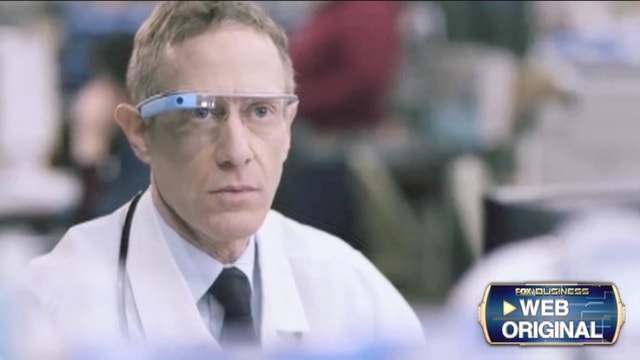Doctors’ Latest Tool: Google Glass
Ask any emergency room doctor about the importance of time, and they’ll likely tell you that seconds can make the difference between life and death. And a new computing startup is taking that into account, leveraging technology that provides a patient’s medical history in the blink of an eye, literally.
San Francisco-based Wearable Intelligence is partnering with Google (NASDAQ:GOOG) to save doctors time in the ER with its software that works with Google Glass that shows providers patients’ full medical records in front of their eyes so they don’t have to toggle between terminals and charts while tending to patients.
Co-founders Yan-David Erlich and Ryan Junee are participating in a new program, “Glass for Work,” aimed at providing tools for businesses to integrate Google’s wearable device into their office setting.
Right now the software is being used by doctors at Beth Israel Deaconess Medical Center in Boston, and Erlich claims the technology has already helped to save a life. A patient came to the hospital with a massive brain bleed, and the standard course of treatment involves medications this patient was allergic to.
“Historically, doctors waste precious seconds going back to the terminal to check the information for the patient. In this case, because the doctor was wearing Google Glass, the allergies and the treatment was in his field of view without having to break eye contact with the patient, and without wasting precious seconds in the course of treatment,” Erlich says.
The duo founded Wearable Intelligence nine months ago, and has been operating in “stealth” testing mode since then, ahead of its recent live launch. The patient reaction at Beth Israel has been enthusiastic so far, Junee says.
“Most patients are obviously focused on the issue they are having in the ER, so the fact that the doctor is wearing glass, they don’t even notice,” he says. “We have been watching this closely, and Harvard will be publishing a study on the results of this. So far, we have seen patients very happy with Glass.”
The software is HIPPA-compliant, according to Junee, and was built from the ground up with patient privacy in mind.
“All communications stay securely within the hospital’s Wi-Fi network,” he says. “If you take glass with our software out of the hospital, it locks with an unusable screen and asks that the device be brought back into the walls of the hospital.”
The partners say the benefits of wearables will extend into every industry.
“We think they are the future, not only in health care, but ranging across a wide spectrum of industries from manufacturing to construction to oil and gas and energy, field services—we think the next few years will usher in a transformation in the way people do their work through the information and software in wearable technologies,” Erlich says.
As for expanding their pilot program, Junee says other hospitals and companies are interested in Wearable Intelligence’s products.
“We see this as the next big platform after computers, mobiles and tablets and now wearables, especially for those workers, 80% or so, who aren’t sitting behind desks, it really allows them to benefit from the digital age.”
